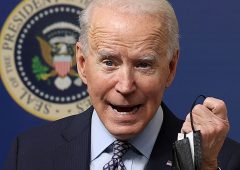Usual Protocol Introduces Revenue Sharing and Early Payouts to Restore Stability
11.01.2025 20:00 1 min. read Alexander Zdravkov
The Usual Protocol has taken steps to address recent concerns about its USD0++ floor price mechanism, unveiling two key updates designed to enhance trust and improve its long-term viability.
After the USD0 stablecoin lost its dollar peg, the protocol announced a new early payout feature. Starting next week, users will have the option to redeem their assets at a 1:1 ratio by forfeiting a portion of their accrued rewards.
This payout system, which spans a maximum of six months, is intended to provide users with more flexibility while alleviating liquidity challenges.
Additionally, the protocol has decided to accelerate its revenue-sharing initiative. Beginning Monday, holders of USUALx tokens will receive weekly revenue distributions in USD0.
Usual Protocol estimates monthly revenues of around $5 million, translating to an annual percentage rate (APR) of over 50% under current market conditions.
In a statement, the team emphasized that these measures aim to bolster the protocol’s sustainability and address community concerns. By advancing its revenue distribution timeline and offering liquidity options, the Usual Protocol seeks to restore confidence among its users.
-
1
German State-Owned Development Bank Issues €100 Million Blockchain Bond
11.07.2025 7:00 2 min. read -
2
Cardano and Ethereum Lead in Developer Activity as GitHub Commits Surge
14.07.2025 12:00 1 min. read -
3
Tether Ends Support for Five Blockchains in Infrastructure Shift
12.07.2025 11:30 2 min. read -
4
BNB Chain Upgrades and Token Delistings Reshape Binance Ecosystem
16.07.2025 22:00 2 min. read -
5
Ripple Powers UAE’s First Tokenized Real Estate Project via XRPL
16.07.2025 21:00 2 min. read
BitGo Files Confidentially for IPO With SEC
BitGo Holdings, Inc. has taken a key step toward becoming a publicly traded company by confidentially submitting a draft registration statement on Form S-1 to the U.S. Securities and Exchange Commission (SEC).
Crypto Greed Index Stays Elevated for 9 Days — What it Signals Next?
The crypto market continues to flash bullish signals, with the CMC Fear & Greed Index holding at 67 despite a minor pullback from yesterday.
U.S. Public Pension Giant Boosts Palantir and Strategy Holdings in Q2
According to a report by Barron’s, the Ohio Public Employees Retirement System (OPERS) made notable adjustments to its portfolio in Q2 2025, significantly increasing exposure to Palantir and Strategy while cutting back on Lyft.
Key Crypto Events to Watch in the Next Months
As crypto markets gain momentum heading into the second half of 2025, a series of pivotal regulatory and macroeconomic events are poised to shape sentiment, liquidity, and price action across the space.
-
1
German State-Owned Development Bank Issues €100 Million Blockchain Bond
11.07.2025 7:00 2 min. read -
2
Cardano and Ethereum Lead in Developer Activity as GitHub Commits Surge
14.07.2025 12:00 1 min. read -
3
Tether Ends Support for Five Blockchains in Infrastructure Shift
12.07.2025 11:30 2 min. read -
4
BNB Chain Upgrades and Token Delistings Reshape Binance Ecosystem
16.07.2025 22:00 2 min. read -
5
Ripple Powers UAE’s First Tokenized Real Estate Project via XRPL
16.07.2025 21:00 2 min. read


